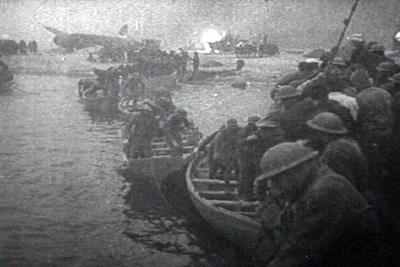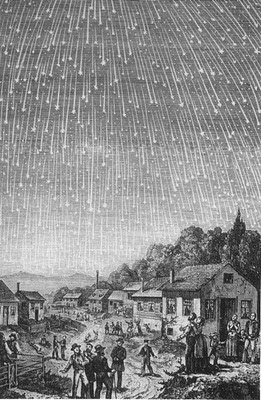A friend, by chance, sent a link to a newspaper article regarding old photos:
"The Power Of The Holiday Photo"
The timing was rather fortuitous in that while my emotions were being lashed by my parents photograph, along comes an article describing why we are sensitive to old photos. The article mentioned the concepts of studium and punctum from a book called Camera Lucida by Roland Barthes. I became somewhat fascinated with these concepts. Studium is the physical, cultural, and political aspects of the photograph. A young couple, late 40’s dress, white shoes and purse, possible cigarette in my father’s hand, snazzy hat and tie. Smiling. Those are elements of the studium of this photograph that apply to anyone including myself. The punctum of the photograph would be that which pierces one’s heart. For many people there would be absolutely no punctum in that photograph. It just some old photo of a couple from the late 40’s that contains absolutely no emotional content for most people. However, if you are of that generation, there might be some punctum for in the style of dress, the age of the couple, the fact of two survivors of the Depression and World War 2 starting a happy life together. The punctum for me obviously is that these people are my parents. But, there is more. They are happy with each other, something that I had seldom seen in their marriage. That possible cigarette—lot of punctum there. My father died of heart failure and my mother would have died of lung cancer if were not for Alzheimer’s and heart failure from the reduced lung capacity. So cigarettes had as much to do with the loss of my parents as LSTs had to do with my creation.
Researching these concepts of studium and punctum whetted my interest and I bought the book from Amazon.
Amazon.com Camera Lucida By Roland Barthes
Some of the user’s comments indicated that it is dry and stuffy, I don’t know. I will see when I get the book. I am hoping to learn what it is that tugs at my heart when I see old photos of my parents, or wife, or son.
Even things and places can invoke this. You may see a dirty old Plymouth in the desert in this photo, reasonable studium. I see my beloved Duster on El Mirage Dry Lake in California...a magical place. Mickey Thompson dragged raced on it back in the 50’s. My Duster had streaked across it at 115 mph a few minutes prior to taking this photograph. A car. Junky by today’s standards, and not much more than junk when it was brand new. The cars of the 70’s were not objects worthy of adoration, yet I did, I adored that car. I look at this picture and I feel a romance for a mechanical object that I have not felt since. My feeling for automobiles now being something on the order of grudging tolerance. And so it is with LSTs. You may look at it and think what an odd and ugly looking thing, and yet I feel tears welling in my eyes for an object for which I have never laid eyes on and yet had so much to do with the conception of me.
I am drifting from my epic tale of a weird week of photography. On Thursday morning, I was running late. I left the house 5 minutes after I should have been at work. As I pushed the door closed, I noticed my neighbor’s morning glories were indeed in full glory. What the hell I was already late, I set down my lunch bag and went in and got my camera. Oh the exquisite beauty of these blooms, blue to purple with tiny droplets of dew. Magnificent! I turned on the camera. The screen was bright white. I pointed the camera at the morning glory, it remained bright white. I snapped a few photos, placed the camera in review mode. The pictures I took from the other day were looking lovely, but those from today? Nothing but a bright white sheet. Oh no my camera is gone! Junk! I tried removing and re-installing the batteries in the hopes of rebooting it. Nothing but plain white images. Oh crap, now I have to research a new camera! The prospect of mind numbing specifications, and numbers, and features, and pros, and cons, and professional reviews, and user reviews gave me an instant head ache.
I mentioned my dilemma to my spiritual adviser for all things automotive and electronic. He said to check out the hybrids or what is known as super zooms. So reluctantly Thursday night I did some minor research…enough to confuse me. The hybrids seemed expensive enough, that what hell, for a few hundred more I may as well get into an entry level digital single lens reflex (DSLR). We chatted some more on Friday and he told me he would send me some ideas from home. He did mention lens cost and that struck home. So last night I started doing some more research on cheap DSLRs. Good grief, once you start adding lenses all that wonderful ability and power gets damned costly. That re-enamored me to take another look at the hybrids.
Then to top things off, I remembered my LST is coming to Pittsburgh, and I don’t have a camera! Damn, I didn’t want to rush this. But I ain’t going down to see the LST with my old film camera. So now that put a sense of crisis in all this. Oh how easy the sky falls upon me.
This morning my spiritual adviser sent me an email with some thoughts. I replied back to him as follows:
Oh Spiritual Adviser on All Things Non-Spiritual,
Desist the search on my account. I was visited by three ghosts, the ghost of cheap, the ghost of claptrap, and the ghost of excessive choice. As always the ghost of cheap speaks loudest, a roaring, screaming specter echoing in my ears yet now.
The first visitation of the ghost of cheap occurred yesterday at work. The specter manifested itself in your body and said quite innocently "Do I really want to spend $1200 for a lens?" My cheap receptors perked up and thought Hmmmm! Hell no I don't want to spend $1200 on an entire system let alone a lens. Alas that statement drove a stake of penury into the DSLR heart and sent it careening forever into the abyss of despair. The other ghosts were probably unnecessary at this point but they visited as well.
So after the $1200 statement got my purse strings puckered tighter than a bull's patoot in fly time, I went back and took another look at the Nikon Coolpix P100 at your DP site. Alas the superzooms seem to be a trade off. Horrendous zoom at the cost of low light ability. But hmmm! There is a Canon here that I hadn't seen mentioned anywhere else, the Powershot SX20IS. According to the DP article it, with the Panasonic, are the best performers of the group of tested super zooms with the Nikon in a close second place. $350 for the Canon and Amazon throws in a 4 gig card free. $14 for second day delivery.
But human ego being what it is, I failed to listen to the ghost of cheap... I want zoom, I want low light, I want macro, I want to take pictures like Alfred Eisentaedt and Ansel Adams. I want to know about f stops, film speeds, light levels, flash settings.... So I went back and again looked at cheap DSLRs.
At that point a dual visitation occurred from the ghost of claptrap, and the ghost of excessive choice. The ghost of claptrap had me grab his sleeve and magically, I was in the woods, beautiful forest canopy creating dull low light on the forest floor. I had a bag full of cameraous claptrap weighing me down. I was kneeling over a flower with the lens set up for a low light macro shot. Just as I squeezed the shutter for my award winning photo of a violet, I heard a loud "Squawwwwkkkkkkkkk" I looked up and 150 feet away was the rare ivory billed woodpecker sitting on an open branch with an absolute clear line of sight from me, a one in two billion shot. I feverishly opened my bag of claptrap, and the telephoto lens rolled out of the bag and started tumbling down the steep path toward the river. Suddenly, a birder jumped out from behind a bush and snaps the shot with his Nikon Coolpix P100. To the fluttering of wings, I heard a splash.
"I say mate, I flew 12,000 miles from Australia to get that shot. Shame about your lens, it looked costly. G'day mate."
Not satisfied with claptrap, I invited the ghost of excessive choice with all the worries and confusions to survey the situation. He opened his long great coat and hundreds of DSLRs hung from the inside all with a good price here but lacking this. Terrible price here but it is the greatest thing since canned beer. Here is a good mix of practicality and price and should be on your short list however remember the fringing... Wait look at this one, but the only trouble is that the image stabilization is located in the flash unit making corrections through the hot shoe, an unfortunate choice in our opinion making a really great camera at a great price somewhat unusable but still as strong contender compared to the picture quality of the other units...but don't overate picture quality compared to image stabilization, and remember with all those sensors in the flash unit, it now weighs 5 pounds 7 ounces and makes the ergonomics of this particular unit a bit ungainly.
But on your list of things to look for is........................
Then claptrap and cheap begin to speak in concert..."So Sextant, old buddy, you now got yourself 10 grand invested in lenses, but you failed to note that your lenses, while technically yes, will screw into any camera body, have an aspherical aberration correction that will only work in the Electrolux body. Alas Electrolux decided to stay in the vacuum cleaner business and dropped their camera line. What a shame, well you know electronic devices, they are bound to fail in 5 to 10 years so you really have to be careful up front not to get locked into specialized equipment. But the curious thing about it is that all the camera bodies that you might be willing to buy price wise seem to have some limiting factor regarding lens selection so if you really want to own a lens forever, you better be looking at that 2 grand body.
ENOUGH FOR GOD SAKE BUY THE DAMNED POWER SHOT SX20IS AND FORGET IT. OH HOW I WISHED MY CAMERA HAD NOT BROKE, MY BELOVED POWER SHOT A60 WITH 2 MEGAPIXELS. 15,000 PICTURES, WHY NOT LAST 30,000?
STOP! NO MORE ADVICE! I am done, done, done, with all this... I can't stand it any longer. I don't care.
What do I really want? Simplicity. Simplicity comes at a cost. In my case it is going to be a camera that I only spend 100 bucks more than the last one. It will most likely knock my socks off, and though I will never be able to do many of things that some people would consider an absolute must, I am too damned dumb and lazy to even know about it, let alone worry about not having that feature. The low light is troubling but I am going to try the Canon. I got to give it the brick and mortar hold in your hand test this morning and I hope to have it on order by noon.
I appreciate your efforts, but they have been undermined by the ghosts of cheap, claptrap, and choice.
Thanks for your help. The photo site was very helpful in my decision:
dpreview.com "Superzoom Recommendations"
In a state of confused terror, I remain,
Sextant
This morning, I went to a couple of brick and mortar stores. I held it in my hand, and fell in love. I was set to buy it at one store, until they told me that there was a 15% restocking fee if I returned the unit due to dissatisfaction. I came home and placed the order with Amazon. Tuesday I will be I photographic nirvana waiting for the ivory billed wood pecker to land in my walnut tree.
Photos
Note! Click on photos for full size.
Of the 15,000 pictures I took with my camera, 14,750 were pure crap. But a digital camera is like giving a baby a machine gun, sooner or later he is going to hit something. Here are some of my better shots.
1. CSX Train Crossing the Augusta Canal, Augusta, Georgia
2. Duster on El Mirage Dry Lake, California 1972 (Obviously not with my digital, but rather a Kodak Instamatic)
3. Lillys in my mother's back yard, Monroeville, Pennsylvania.
4. Apple blossoms. Western Pennsylvania
5. Rain drops on blossoms, North Park, Allegheny County, Pennsylvania
6. Snow leopard, Akron Zoo, Akron, Ohio
7. Fort Pitt Bridge, Downtown Pittsburgh, Pennsylvania
















